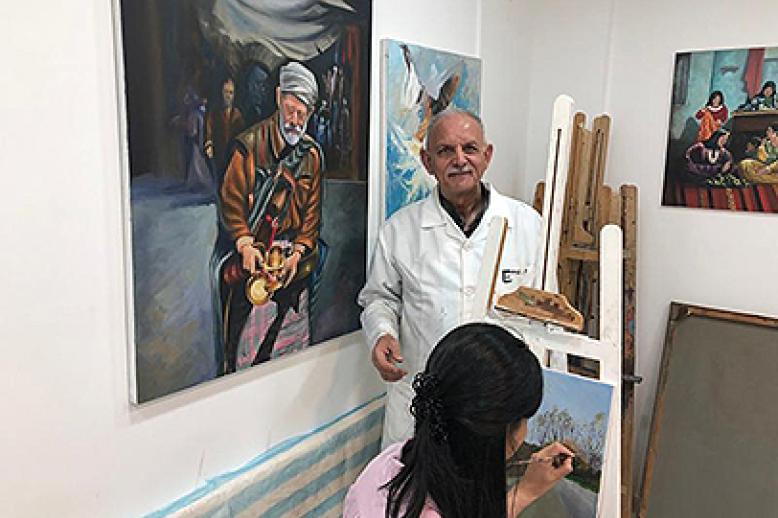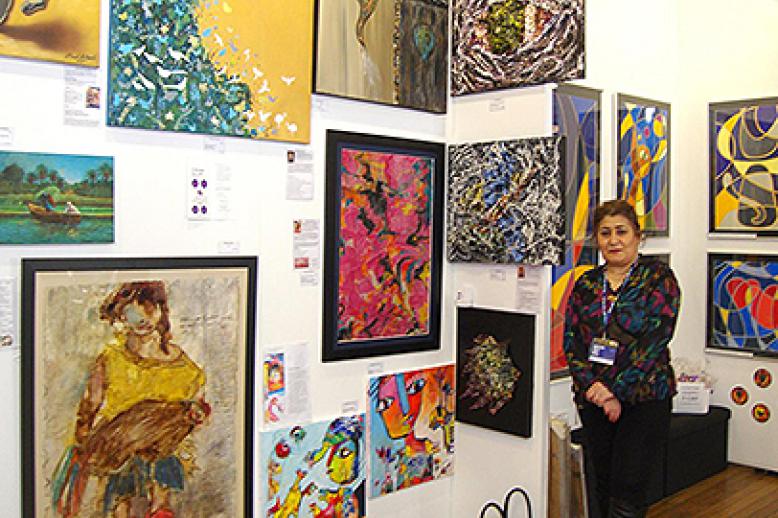Traditional art of henna is resisting test of time in Jordan

Once considered an essential part of bridal ritual and beautification, the art of henna is slowly fading in Jordan. Many brides are skipping the tradition and heading towards a more modern “shower party” concept.
Henna comes from the leaves of a shrub, the Lawsonia inermis, and is usually sold in Arab markets in powdered form. For Naqa’ Gharaibeh, 33, henna is about history and traditions, not only business.
“I fell in love with the art of henna when I was a child living in the United Arab Emirates. Henna is very popular in the Gulf region where they have beautiful patterns and designs that are different from anywhere else. Henna in the Gulf is a way of life and a very prestigious issue,” said Gharaibeh, a Jordanian henna artist.
Gharaibeh dreamt of sharing her henna art talent with friends and then saw an opportunity to open a business in one of the most prestigious areas in Amman with a close friend.
“We are considered one of the pioneer places in Amman that offer the art of henna and we have a talented team who work tirelessly to satisfy our customers,” Gharaibeh said of Henna House, which she established in 2016.
Henna night
“The henna night used to be a sad occasion as the bride prepared to leave her family home and move to her new home with her groom. Today it is different and the rituals are just a way of preserving the tradition.”
Gharaibeh said henna was prepared for the bride on a tray with scented oils and decorated with flowers and candles are used in the dancing ritual during the event. Friends of the bride draw patterns on her hands and feet, which might be the first letter of the groom’s name or beautiful drawings of curved lines and flowers.
Henna House became popular through word of mouth and, despite competition from various tattoo parlours, henna has dedicated customers, mainly females.
“We receive many demands from men asking that we open a section for them,” Gharaibeh said. “Many feel that henna, which comes in many colours today, is better than a tattoo because it only lasts for a couple of weeks or so. It is not permanent, so there is no risk of regrets.”
Henna comes mainly in brown and reddish colours, in addition to black and white and it is usually done with Indian or Arabesque patterns. Prices range from $7-$40, depending on the size and the complexity of the pattern.
“It is cheaper than doing a real tattoo, which costs around $120 in Amman. Many come for a henna session, which lasts around 1 hour, and then go to a party. It is a way of adding beauty tips to the perfect dress and makeup,” Gharaibeh said.
Henna House offers classes in henna art, a way of spreading knowledge about the art and helping keep the tradition alive.
“We give training courses covering all levels from beginners to professionals. We have a lot of people who are interested in such an art whether for personal use or for professional use. We also do a follow-up and noticed that many do freelancing jobs at girls’ parties and they make money,” Gharaibeh said.
A training course of 10 hours costs $140 for beginners.
To lure more business, including macho types, Gharaibeh said she is working on introducing a new henna technique.
“We are planning to use the Jagua tattoo, which comes from a natural plant source — a fruit from the Amazon — and works in a very similar way as henna but looks more like a real tattoo, which we believe will appeal to male clients,” she said. “For us, henna is part of our history as Arabs, while foreigners come to the shop for quick henna as a souvenir from the Arab world.”
Gharaibeh’s clients include girls as young as 5 years. “Kids tend to do the same as their mothers and we have devised a special programme for them in which they learn about the history of henna,” she said.
Henna was largely used in ancient Egypt and India as a form of temporary tattoo for religious ceremonies, wedding festivals and for simple body decoration and even to dye hair. Brides usually have their hands and feet decorated as part of wedding rituals.
Roufan Nahhas, based in Jordan, has been covering cultural issues in Jordan for more than two decades.
This article was originally published in The Arab Weekly.





